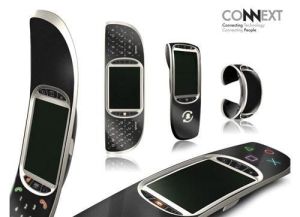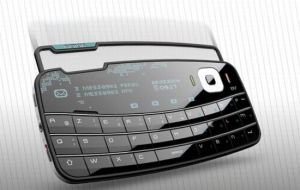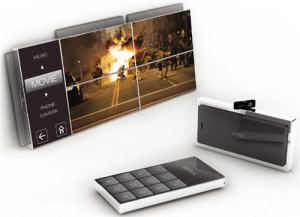After finding some more concepts, I decided to share them with you guys. In my opinion looking at concepts can sometimes change the mood to a better one or could make you think “Oh! So that’s gonna be next!”. These microwaves on the steroids could be the next step in our daily lives thus it’s a good idea to know what’s coming.
 This Nokia phone looks rather similar to the average mp3 player. However, it delivers a nice black touch with a centred display screen, which might attract some teens. In my opinion, nothing special here, just another Nokia phone.
This Nokia phone looks rather similar to the average mp3 player. However, it delivers a nice black touch with a centred display screen, which might attract some teens. In my opinion, nothing special here, just another Nokia phone.
The Connext concept seems to me like one of those concepts that delights everyone but will probably never reach the market. Looks pretty similar to the Nokia Morph concept with the bending technology, however, it looks more like a A/C remote control. The only Unique Selling Point it has, is the bending ability, excluding that, nothing interests me in this concept.
everyone but will probably never reach the market. Looks pretty similar to the Nokia Morph concept with the bending technology, however, it looks more like a A/C remote control. The only Unique Selling Point it has, is the bending ability, excluding that, nothing interests me in this concept.
Nokia has yet again surprised me with this amazing E97 concept, which I hope will find its way on the market soon. It has a very practical design, which includes a QWERTY keyboard, a neat and sleek design with a nice glossy black touch and a very intelligent changeable memory technology. The display, which also contains the memory of the phone, can easily be removed and changed amongst other phones, which enables a fast and easy transfer of information and data. The main flow behind this idea, is the assumption that this phone will sell like iPhones or Blackberrys. If a very small number of E97 will be sold, then the memory transfer technology will be quite useless. On the other hand, i would buy this phone just for the looks, so this memory transfer idea won’t really affect me.
The display, which also contains the memory of the phone, can easily be removed and changed amongst other phones, which enables a fast and easy transfer of information and data. The main flow behind this idea, is the assumption that this phone will sell like iPhones or Blackberrys. If a very small number of E97 will be sold, then the memory transfer technology will be quite useless. On the other hand, i would buy this phone just for the looks, so this memory transfer idea won’t really affect me. Overall, Nokia has really nailed this one and has created a really attractive model.
Overall, Nokia has really nailed this one and has created a really attractive model.










